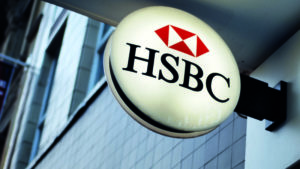The US consumer price index rose 0.4% in March, causing inflation from last March to increase by 3.5%, with both numbers coming in above market expectations.
Without food and energy, the CPI rose 3.8% on the year. While markets have been anticipating rate cuts with discussion around a decision in June, chair Jerome Powell has previously emphasised the need for more confidence that inflation is on course to its 2% goal before proceeding.
Lindsay Rosner, head of multi-sector investing at Goldman Sachs Asset Management, said because the market feels the Fed could be losing confidence in its 75bps projection, “today’s data mattered”.
“CPI came in stronger than the consensus 0.3% and the rates market needs to seriously consider the likelihood of higher-for-longer at least lasting through the summer and potentially through the end of the year,” Rosner said.
“This number did not eclipse the Fed’s confidence; it did, however, cast a shadow on it. When it comes to spread risk, one hotter CPI print does not derail the bigger story which is the economy is strong, defaults remain benign, and the technicals continue to cast sunshine on spreads maintaining this range.”
Morningstar’s chief US economist Preston Caldwell also looked for larger context around the headline numbers, pointing out an increase in the number due to motor vehicle insurance and other components which are relevant in CPI, but not in the Personal Consumption Expenditures Price Index (CPE). The PCE measures on a superlative index, which makes data harder to capture in real time and weights items differently. Caldwell expects a 0.2% or 0.25% month-over-month growth for PCE.
“The core inflation news isn’t as bad as it looks at first glance, increasing 0.36% month-over-month. Subtract a few hundredths of a percentage point and the headlines would be far less alarming,” Caldwell said.
“If core PCE inflation ends up around 0.25% or higher, chances of a Fed Funds Rate cut in June become less than 50%, though not impossible. If core PCE inflation ends up at 0.2%, then a June rate cut is still more likely than not in our view.”
In January, US inflation came in at 3.1% for year-on-year gain, which was 20 basis points above expectations. The pattern repeated in February, with a yearly 3.2% gain and a 0.4% gain on the month, which was again above expectations.
Max McKechnie, Global Market Strategist at JP Morgan Asset Management, said: “The hope going into today’s release was that January and February’s hotter prints would be confirmed as seasonal noise rather than the start of a new trend. Unfortunately, disinflation continues to elude core services as strength in shelter inflation and resurgent medical costs conspired to hold the rate of price increases firm.
“This release doesn’t in our view mean the Fed cannot cut rates in the summer. The Fed can point to the ongoing normalisation of the labour market as well as the recent small business survey to justify its expectation that disinflation will reassert itself over 2024. But with both growth and inflation remaining firm it’s clear that rate cuts will be modest in overall magnitude.”
Neil Birrell, chief investment officer and lead fund manager at Premier Miton Diversified Funds, added: “With rate cut expectations getting pushed further out over the last few weeks, today’s CPI data will give little hope for those looking for better news on that front.
“The US economy is running along at quite a pace and a June rate cut looks less and less likely – July or September is the call now. The Fed has got some head scratching to do and if other central banks were waiting for the Fed to move, they have got a conundrum on their hands now.”
The European Central Bank announces its rate decision tomorrow (11 April), with current key rates at 4.5%, 4.75%, and 4% where they’ve stayed since September 2023.







